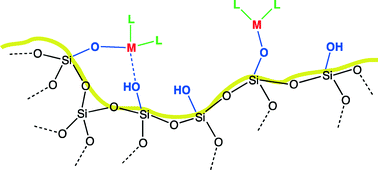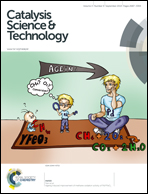Site isolated complexes of late transition metals grafted on silica: challenges and chances for synthesis and catalysis
Abstract
Transition metal (TM) ions can be covalently attached to a silica surface by means of a M–OSi bond (grafting) to give site-isolated complexes. Acting as a ligand in such grafted species, the surface influences the electronic nature and the coordination number of the TM ion, in contrast to anchored complexes, in which a linker separates the metal ion and the surface and hence reduces their interaction. This perspective reviews general grafting strategies on an oxide surface and focuses on the peculiarity of silica-grafted catalysts of late TMs, which have a higher tendency to undergo aggregation into metal nanoparticles under reducing conditions than early TMs. Soft ligands (hydride, phosphines) and/or π-acceptors (CO) promote aggregation. In particular, silica-grafted hydride complexes of late TM ions are not stable and tend to undergo reductive elimination of silanol. The coordination chemistry background of this behaviour is discussed, and possible strategies to avoid aggregation are suggested.


 Please wait while we load your content...
Please wait while we load your content...